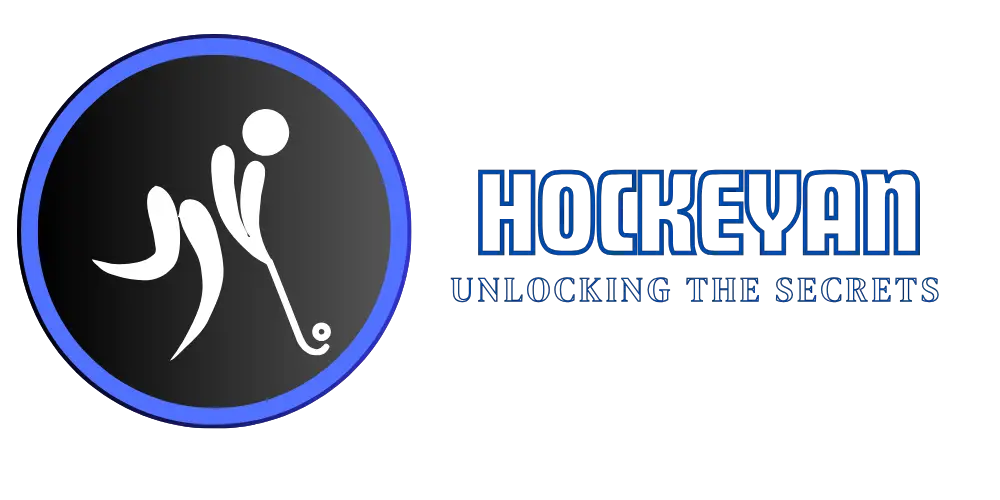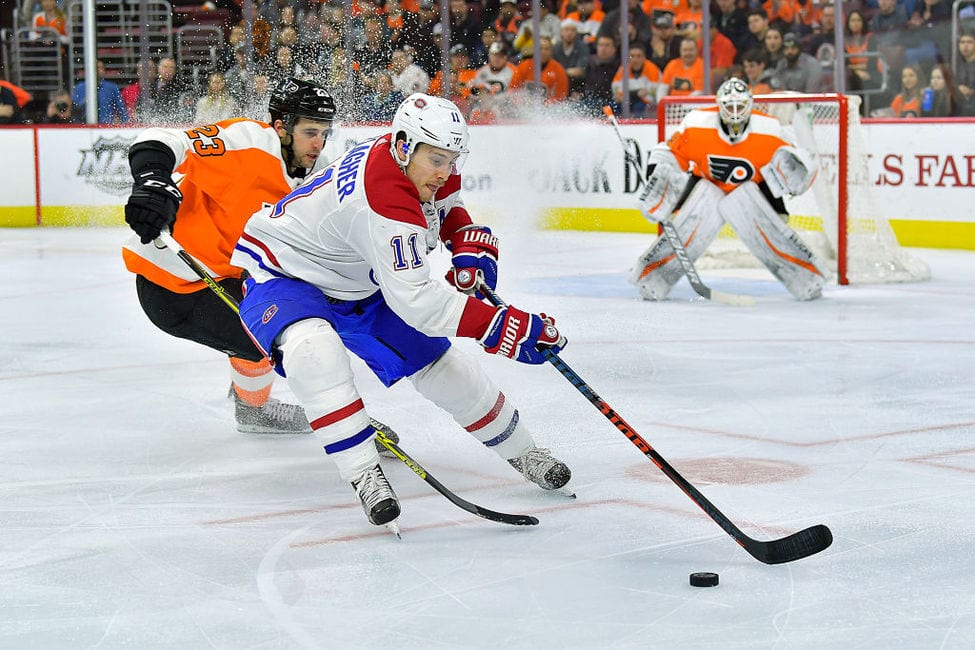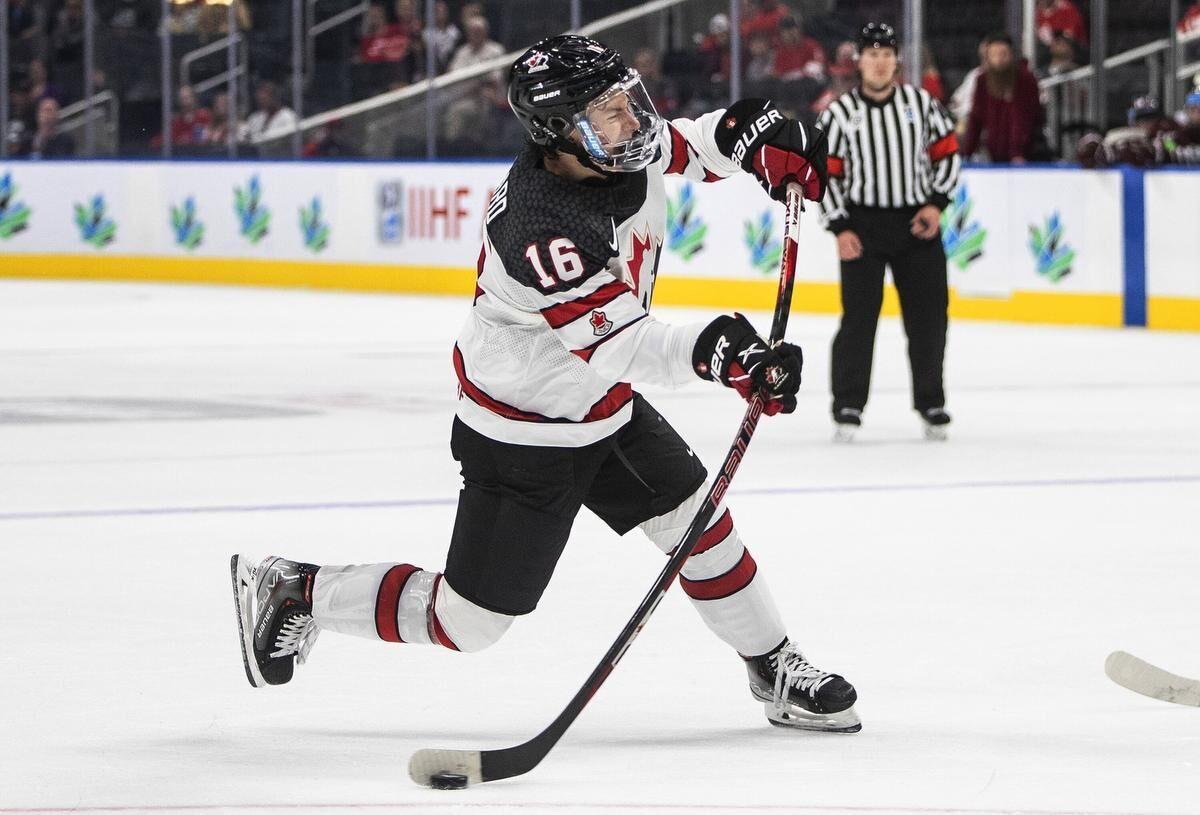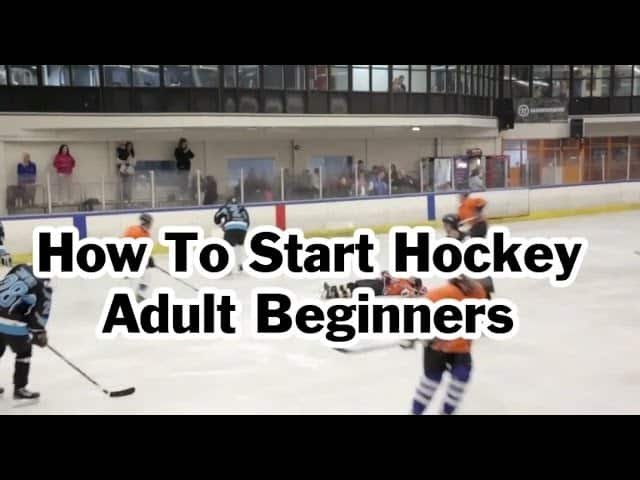To guide a hockey puck, use your stick to control its movement and direction. Keep your eyes on the puck and the play.
Guiding a hockey puck effectively is essential for successful gameplay. Mastering this skill involves precise stick handling and constant awareness of the puck’s position. Players must practice maintaining control while moving at various speeds. Developing these abilities enhances your performance on the ice and helps you make strategic plays.
Practice consistency leads to better puck management. Focusing on these fundamentals will improve your overall game and make you a more valuable team player. Remember, effective puck control can make the difference between scoring and losing possession. Keep practicing to refine your technique and stay ahead in the game.
Mastering The Basics
Learning how to guide a hockey puck starts with mastering the basics. Beginners need to understand proper techniques to control the puck. This section covers essential skills for guiding the hockey puck effectively.
Gripping The Hockey Stick
Proper grip is crucial for controlling the hockey stick. Hold the stick with both hands. Your top hand should be near the top of the stick. Your bottom hand should be about halfway down. The grip should be firm but relaxed. Ensure your thumbs point towards the blade.
Stance And Balance
A good stance helps maintain balance on the ice. Stand with your feet shoulder-width apart. Bend your knees slightly. Keep your weight on the balls of your feet. Your body should be low and centered.
Use the table below to check your stance and balance:
| Stance Element | Description |
|---|---|
| Feet Position | Shoulder-width apart |
| Knee Bend | Slightly bent |
| Weight Distribution | On the balls of feet |
- Practice these stances daily.
- Maintain balance throughout the game.
Master these basics to improve your hockey skills. Remember, a strong foundation is key to success on the ice.
Stickhandling Essentials
Mastering stickhandling in hockey is crucial for any player. It enhances puck control, improves agility, and boosts overall game performance. This guide will explore key techniques to elevate your stickhandling skills.
Wrist Movements
Effective stickhandling starts with your wrists. Your wrists should be flexible and quick. This flexibility allows for precise movements. Practice rolling your wrists to move the puck side to side. This is called the cradle motion.
Use a lightweight stick to get started. Focus on smooth and consistent movements. Over time, increase the speed of your wrist rolls.
Remember, your top hand controls the stick. Your bottom hand guides it. Maintain a soft grip to allow for better puck control.
Puck Control Drills
Drills are essential for improving puck control. Start with basic drills and gradually move to complex ones. Here are some effective drills to try:
| Drill Name | Description | Benefits |
|---|---|---|
| Figure Eight | Move the puck in a figure-eight pattern. | Improves control and agility. |
| Toe Drag | Drag the puck using the toe of your stick. | Enhances stickhandling precision. |
| Obstacle Course | Stickhandle around cones or obstacles. | Boosts coordination and quickness. |
Another effective drill is the stationary stickhandling drill. This drill helps with puck control without moving your feet. Stand in place and move the puck side to side. Then, try moving it in circles around your body.
Include these drills in your daily practice. They will improve your stickhandling skills. Remember to keep your head up and eyes forward during drills. This helps in real-game situations where awareness is crucial.
Precision Passing
Guiding a hockey puck with precision is vital in hockey. It ensures the puck reaches your teammate smoothly. Mastering precision passing can greatly improve your game. Below, we will explore key aspects of precision passing.
Timing Your Passes
Timing is everything in hockey. A well-timed pass can change the game. Wait for the right moment before passing. Observe your teammate’s position. Make sure they are ready to receive the puck.
Keep these points in mind for better timing:
- Watch your teammate’s stick.
- Check for open lanes.
- Avoid defenders.
Practice makes perfect. Work on your timing during practice sessions. The more you practice, the better your timing will get.
Accuracy Exercises
Accuracy is crucial for effective passing. Here are some exercises to improve your accuracy:
- Stationary Passing: Pass the puck to a stationary target. Increase the distance as you get better.
- Moving Target: Pass the puck to a moving target. This simulates real-game situations.
- Obstacle Course: Set up an obstacle course. Pass the puck around the obstacles to a target.
These exercises will help you become more accurate. Consistent practice is the key to improvement.
Quick Tips For Precision Passing
- Keep your eyes on the target.
- Use your body to guide the puck.
- Maintain a firm grip on the stick.
Follow these tips and you will see improvement in your passing skills.
Powerful Shooting Techniques
Mastering powerful shooting techniques is crucial for hockey players. These techniques help players score more goals. Two key shooting methods are the slap shot and wrist shot. Let’s dive into their mechanics and finesse.
Slap Shot Mechanics
The slap shot is a powerful technique. It requires strength and precision. Follow these steps for an effective slap shot:
- Position your feet shoulder-width apart.
- Grip the stick firmly with both hands.
- Raise the stick to waist height.
- Bring the stick down forcefully, hitting the ice first.
- Follow through with a fluid motion, aiming for the goal.
Remember to keep your eyes on the puck. This ensures accuracy and power.
Wrist Shot Finesse
The wrist shot is all about control and accuracy. It’s quicker and often surprises goalies. Here’s how to perfect your wrist shot:
- Start with the puck near the heel of your stick blade.
- Transfer weight from your back foot to your front foot.
- Snap your wrists while moving the puck forward.
- Release the puck with a flick of your wrist.
Practice makes perfect. Focus on your wrist movement and aim.
Here’s a quick comparison of the two techniques:
| Technique | Power | Control | Speed |
|---|---|---|---|
| Slap Shot | High | Medium | Slow |
| Wrist Shot | Medium | High | Fast |
Both techniques have their advantages. Choose the best one based on your situation.
Defensive Puck Handling
Defensive puck handling is crucial in hockey. It helps keep the puck out of your zone. This skill requires precision and quick thinking. Below are some tips to master defensive puck handling.
Shielding The Puck
Shielding the puck is essential. It helps you keep control against attackers. Use your body to block opponents. Position yourself between the puck and the attacker.
- Keep your stick low: It helps in maintaining balance.
- Use your body: Lean into opponents to protect the puck.
- Stay alert: Always know where your teammates are.
Practice these tips to shield the puck effectively. This will make it hard for opponents to steal it.
Quick Decision Making
Quick decision making is vital. You need to act fast under pressure.
- Scan the rink: Always be aware of your surroundings.
- Anticipate moves: Predict where the puck might go.
- Communicate: Talk with teammates for better coordination.
Good decision making can turn defense into offense. Practice these skills to improve your game.
Advanced Deking Moves
Mastering deking moves can make you a formidable hockey player. Advanced deking tricks can confuse defenders and create scoring opportunities. Let’s dive into some of these advanced techniques.
Fake-out Strategies
Fake-out strategies involve tricking your opponent into thinking you will move in one direction. Then, you quickly change direction.
- The Shoulder Fake: Move your shoulder in one direction. Then, quickly shift your body the other way.
- The Toe Drag: Pull the puck back with your toe. This creates space and fakes out the defender.
- The Head Fake: Use your head to indicate a move. Then, quickly go the other way.
Improving Deke Speed
Speed is crucial in deking. Faster moves make it harder for opponents to react.
- Practice Daily: Spend time each day on deking drills.
- Strength Training: Build leg and core strength to move faster.
- Quick Feet Drills: Use ladders and cones to improve foot speed.
Combining these fake-out strategies with improved deke speed can elevate your game. Keep practicing and stay sharp on the ice.
On-ice Vision Training
Mastering the art of guiding a hockey puck involves more than just physical skills. On-ice vision training is essential for improving your ability to anticipate plays and read the defense. This training helps players make smarter decisions quickly.
Anticipating Play Development
Anticipating play development helps players stay ahead of the game. Here are some key tips:
- Keep your head up while skating.
- Observe teammates’ positions.
- Watch opponents’ movements closely.
- Predict where the puck will go next.
By anticipating plays, you can position yourself better. This helps you make faster, smarter passes and shots.
Reading The Defense
Reading the defense is crucial for successful puck control. Here are some strategies:
- Identify defensive formations.
- Look for gaps in the defense.
- Notice defenders’ body language.
- Use quick fakes to mislead defenders.
Understanding the defense helps you find opportunities to advance. You can exploit weaknesses and create scoring chances.
| Skill | Tip |
|---|---|
| Anticipating Play Development | Keep your head up |
| Reading the Defense | Identify defensive formations |
Credit: thehockeywriters.com
Maintaining Puck Possession
In hockey, keeping control of the puck is crucial. It helps create scoring opportunities and prevents the other team from gaining possession. Here, we’ll discuss key techniques to help you maintain puck possession.
Body Positioning
Body positioning plays a vital role in maintaining puck possession. Keep your body between the puck and the opponent. This creates a physical barrier, making it harder for the opponent to steal the puck.
Stay low and bend your knees. This improves balance and stability. A low center of gravity helps you maneuver better. Use your body weight to shield the puck. Keep your stick close and ready to make plays.
| Tip | Action |
|---|---|
| Stay Low | Bend your knees for better balance |
| Shield the Puck | Use your body to block opponents |
Protecting The Puck In Traffic
Protecting the puck in traffic is essential in crowded areas. Use your stick to keep the puck away from opponents. Extend your arm and use your stick to create distance.
- Keep your head up to see incoming threats.
- Use quick stickhandling to confuse opponents.
- Make use of the boards to bounce the puck away.
In tight spaces, quick decisions are key. Pass the puck quickly to a teammate if you’re under pressure. Always be aware of your surroundings and anticipate moves.
- Keep your stick close to your body.
- Use your body to shield the puck.
- Be aware of your surroundings.
- Pass quickly if under pressure.
Training For Endurance And Agility
Endurance and agility are crucial for hockey players. These skills help in maintaining speed and control. In this section, we will explore methods to improve both.
Off-ice Conditioning
Off-ice conditioning is essential for building endurance. It focuses on overall fitness and strength. Here are some effective exercises:
- Running: Improves cardiovascular health.
- Cycling: Enhances leg strength and stamina.
- Jump Rope: Boosts coordination and foot speed.
These activities should be done regularly. They prepare your body for the physical demands of hockey.
Agility Ladder Drills
Agility ladder drills are great for enhancing quickness and footwork. They help in rapid direction changes. Here are some popular drills:
| Drill | Focus |
|---|---|
| In and Out | Boosts foot speed and coordination. |
| Lateral Side Steps | Enhances side-to-side movement. |
| Carioca | Improves hip mobility and agility. |
Perform these drills consistently. They will greatly enhance your agility on the ice.
Credit: thepeterboroughexaminer.com
Mental Preparation For Game Time
Being mentally prepared is key to guiding a hockey puck effectively. Mental readiness helps players stay focused and handle pressure during the game. This section explores various techniques to enhance mental preparation.
Focus Techniques
Staying focused is crucial in hockey. Here are some focus techniques:
- Visualization: Picture yourself making successful plays.
- Breathing Exercises: Deep breaths calm the mind.
- Mindfulness: Stay present and aware of the moment.
Use these techniques regularly to improve focus during the game.
Handling Pressure Situations
Handling pressure is essential in high-stakes moments. Here are some tips:
- Positive Self-Talk: Encourage yourself with positive words.
- Stay Calm: Keep a cool head under pressure.
- Focus on the Process: Concentrate on playing well, not the outcome.
These tips help players stay composed and perform better under pressure.
Credit: www.reddit.com
Frequently Asked Questions
How To Shoot A Hockey Puck For Beginners?
Stand with knees bent, feet shoulder-width apart. Grip the stick with both hands. Position puck near your front foot. Pull the stick back, then push forward while rotating your hips. Aim and follow through towards the target. Practice regularly to improve accuracy and power.
How Do You Teach Puck Handling?
Teach puck handling by emphasizing control, balance, and coordination. Practice stickhandling drills, figure eights, and obstacle courses regularly.
How To Get Better Puck Control?
Improve puck control by practicing stickhandling drills daily. Focus on hand-eye coordination and use cones for obstacle courses. Keep your head up and stay balanced on your skates.
How Do You Strike A Hockey Puck?
To strike a hockey puck, grip the stick firmly and position the puck near the blade’s heel. Transfer weight from back to front foot, swing the stick, and make contact with the puck using a snapping motion. Aim and follow through for accuracy.
Practice for consistency.
Conclusion
Mastering how to guide a hockey puck enhances your gameplay and boosts your confidence on the ice. Practice regularly to refine your skills. With dedication, you’ll see significant improvements. Remember, technique and precision are key. Stay persistent, and soon you’ll maneuver the puck with ease.
Happy playing!
